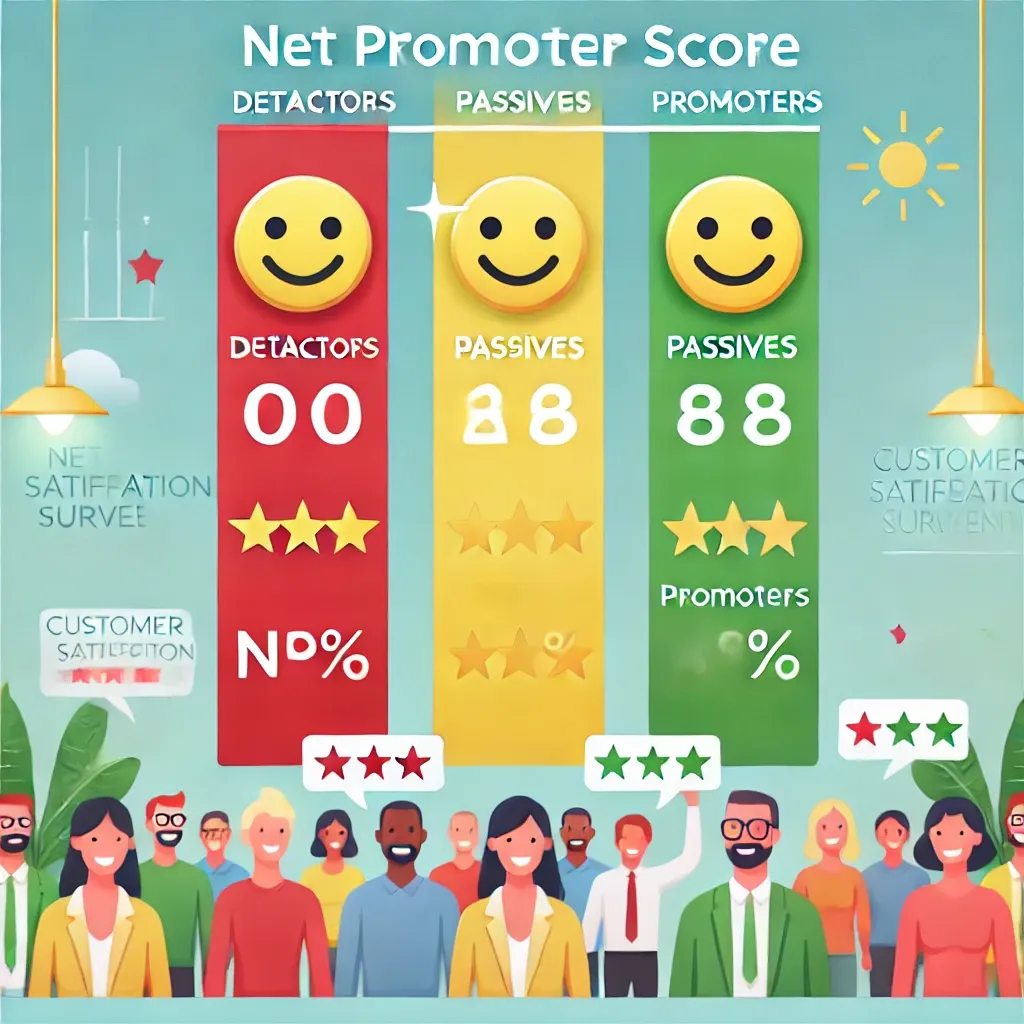NPS Score

What is NPS?
Net Promoter Score (NPS) is a metric used to measure customer satisfaction and loyalty. It provides structured feedback on various aspects of a business, helping organisations enhance their operations and customer relationships.
Example: A Retail Business
Imagine a retail business that engages customers through its app and services. To understand customer sentiment, the business collects feedback on touchpoints like customer support and product quality. For instance, if customers consistently rate their experiences poorly, it indicates dissatisfaction that must be addressed to improve the NPS.
Key Advantages of NPS
1. Enhances Customer Loyalty
NPS directly correlates with customer loyalty. A higher score indicates that customers are more likely to:
- Return for repeat purchases.
- Recommend the business to others.
Example:
A small business receives feedback indicating delays in customer service. By addressing these issues and improving response times, the business enhances customer satisfaction, turning detractors into promoters.
2. Drives Revenue Growth
Satisfied customers become repeat buyers and brand ambassadors. Promoters help businesses acquire new customers through positive word-of-mouth, reducing the cost of customer acquisition (COCA).
Example:
A local e-commerce platform offers exclusive discounts to passive customers, converting them into promoters. This strategy increases both sales and customer retention.
3. Identifies Areas for Improvement
NPS highlights specific issues affecting customer satisfaction. Businesses can prioritise and address these gaps, improving overall service quality.
Example:
A hospitality business identifies through NPS feedback that check-in delays are a common complaint. By streamlining the process, it enhances the guest experience and improves its score.
4. Strengthens Investor Confidence
Investors value NPS as an indicator of customer loyalty and business sustainability. A high NPS demonstrates that customers trust and support the brand, making it an attractive investment.
Example:
An Australian tech start-up improves its NPS by addressing customer concerns about its app. This effort boosts investor confidence and helps secure funding for expansion.
5. Boosts Employee Morale
When customers provide positive feedback, it motivates employees and fosters a sense of pride. Additionally, a strong NPS score can make a company more appealing to potential hires.
Example:
A company shares positive NPS feedback during team meetings, recognising employees for their contributions. This practice enhances morale and encourages better performance.
Types of Customers in NPS
- Promoters: Highly satisfied customers who recommend your business.
- Passives: Neutral customers who could become promoters or detractors based on their experiences.
- Detractors: Unhappy customers likely to discourage others from engaging with your business.
Focus on Passive Customers
Passive customers represent significant growth potential. By addressing their concerns and offering targeted incentives, businesses can convert them into promoters.
Example:
A fitness centre identifies passive customers through NPS feedback. By offering personalised training plans, it improves customer engagement and loyalty.
How to Calculate NPS
NPS = (% Promoters) - (% Detractors)
Example:
Out of 100 customers, 50% are promoters, and 30% are detractors: NPS = 50 – 30 = 20
Benchmarks:
- Good companies: 60-65%
- World-class companies: 80% or higher
Strategies to Improve NPS
- Engage Detractors:
- Apologise and address their concerns.
- Communicate improvements and invite them to revisit your business.
- Incentivise Promoters:
- Offer loyalty rewards and exclusive perks.
- Show appreciation for their continued support.
- Monitor Passives:
- Provide personalised offers to build loyalty.
- Address potential issues before they escalate.
How to Implement NPS in Your Business
1. Google Sheets and Forms
- Use Google Forms to collect customer feedback with 1-3 targeted questions.
- Categorise responses into promoters, passives, and detractors.
- Analyse results in Google Sheets to identify trends and take action.
2. Automated Tools
- Adopt tools designed for NPS tracking.
- Use platforms that integrate with messaging services like WhatsApp for seamless feedback collection.
- Regularly monitor and act on NPS data to ensure continuous improvement.
3. Organisational Responsibility
Assign a dedicated team or leader to oversee NPS initiatives. Regularly review feedback and implement changes to enhance customer satisfaction.
Conclusion
NPS is a vital tool for businesses aiming to improve customer satisfaction, drive revenue growth, and strengthen loyalty. By actively engaging with detractors, nurturing promoters, and focusing on passives, businesses can achieve sustained success and a strong market presence.
